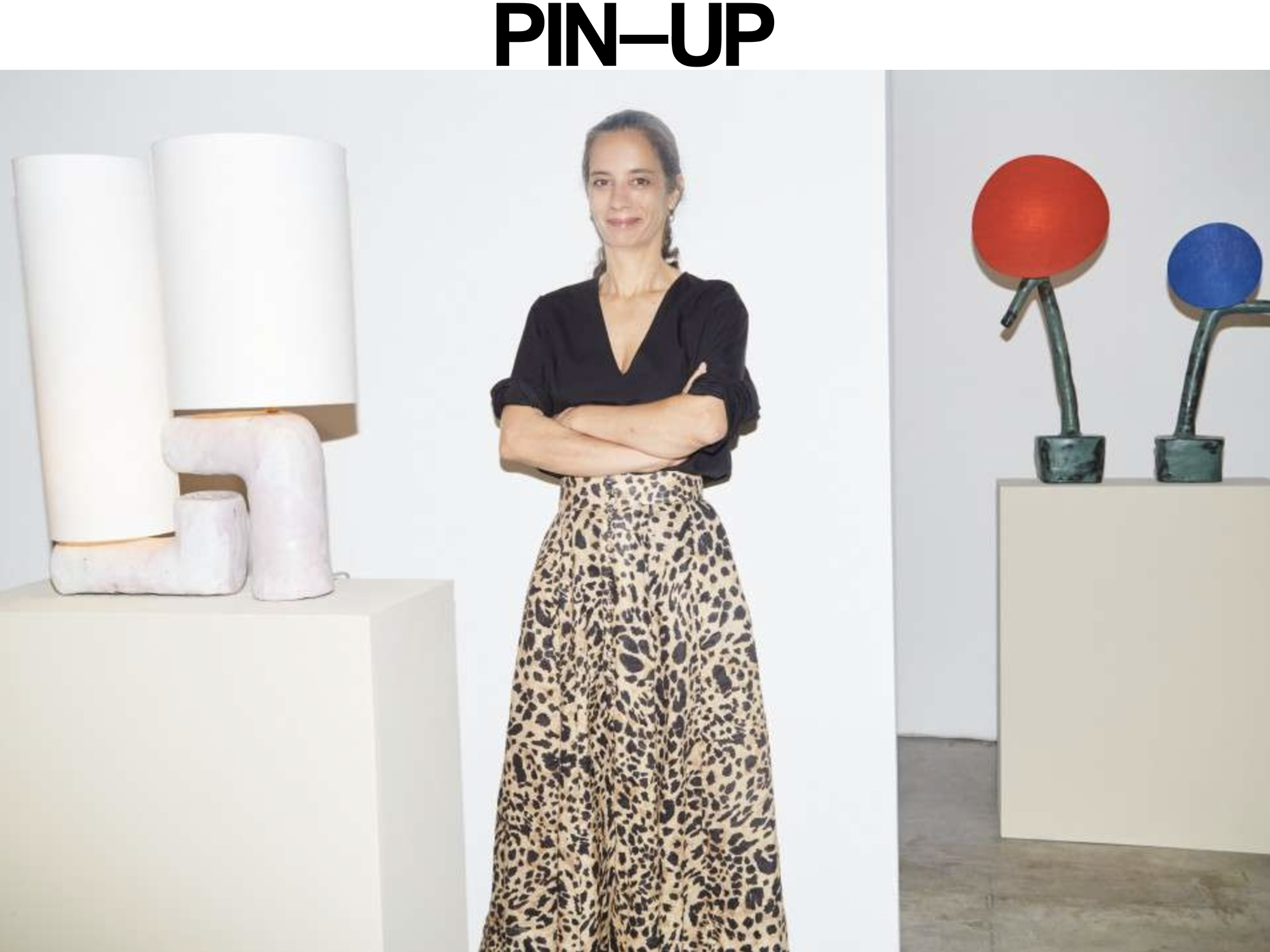By Camille Okhio
All photographs by Ben Taylor for PIN-UP
Leading up to her first solo show at Friedman Benda, Swiss-Italian polymath Carmen D’Apollonio and I sat down to speak about her process and her pieces. Primarily working in clay (with a recent foray into bronze), D’Apollonio creates sculptural characters that feel interactive, lighting up spaces both metaphorically and literally. Her lamps and vessels, which have grown in size gradually since she started working with clay seven years ago, are undoubtedly creature-like. Hulking, stooping, and squatting beside you or looking down from above at you, they engage in cyclical and spasmodic conversations — with their audience and one another. While today she calls herself a “studio potter,” L.A.-based D’Apollonio’s wide-ranging background spans co-founding the Swiss fashion brand Ikou Tschuss (where she co-leads design) and a long career assisting artist Urs Fischer. Her resumé even includes film and commercial art direction as well as a stint in floral design. And though her pieces are functional, D’Apollonio occupies space and communicates with a vividly artistic lilt. Her work is as joyous and exciting as she is.
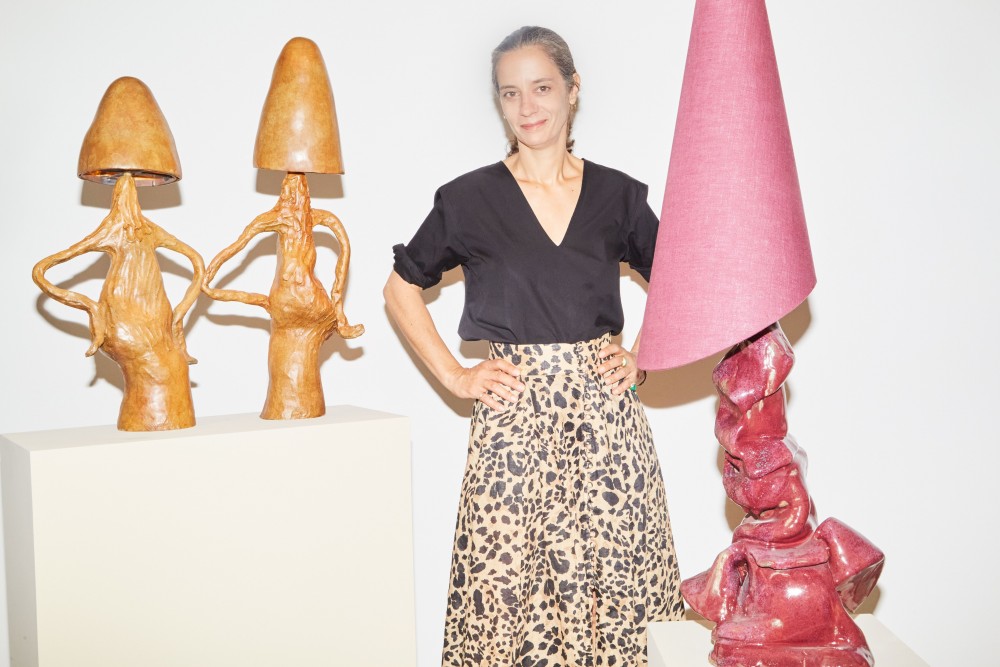
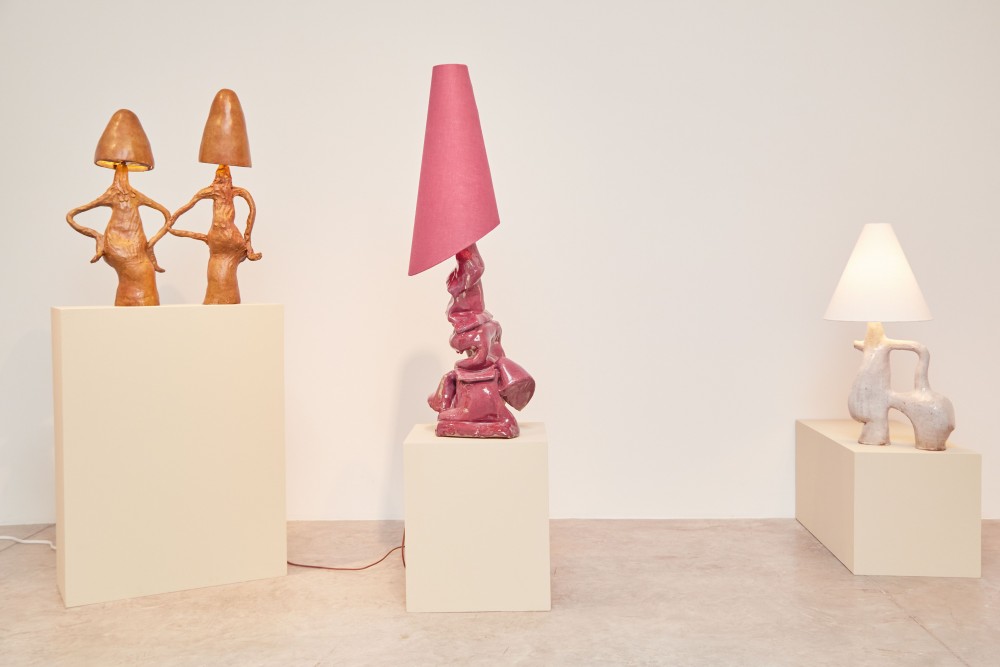
Camille Okhio: You have had such an interesting non-linear trajectory, so let’s start at the beginning of your creative arch — what was your first job?
Carmen D’Apollonio: I studied in Switzerland to be a window dresser for four years, but I never ended up working in that field. In the program you go through all these areas — you work in wood, you make sculpture, you build pedestals, and so on. It’s very creative. After I finished my studies, I worked in a flower shop for a while. I did so much. I worked in bars. I worked for artists. Then I started working in galleries setting up exhibitions. That’s how I met Urs Fisher. I was working at the Migros Museum in Zurich and Urs was in a group show there where he made a wall out of vegetables. We became very close friends and kept in touch and eventually I offered myself as an assistant (I was so bored in Zurich). He said yes and I moved to Berlin (where he was working) the next week. I stayed with Urs for over ten years, moving with him from Berlin to New York and traveling all over the world to help with his shows.
Did working for Urs Fischer leave a mark on you? What was the experience like?
Yes, of course. I did a lot of sculpture work for Urs. I was building sculptures with different materials, learning a lot.
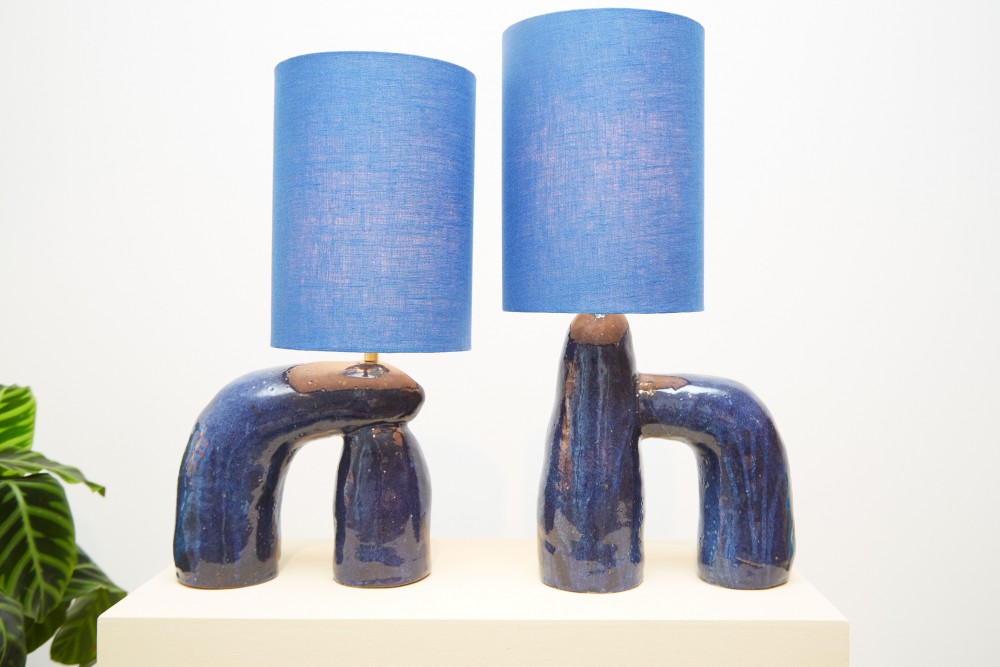
Speaking of sculpture, it seems like you’ve been working on larger and larger scales over the last seven years. What has that process and expansion been like?
I try to make larger and larger lamps without breaking them, but it’s not easy. I eventually got a really big kiln — it’s six feet tall. I can stand in it, so that helps. But for a big piece to dry completely and nicely (before firing) it takes up to six or seven months. You have to keep the piece in the plastic for this time, let it breathe a little bit, put the plastic on again — if you push it a little too hard, cracks can form.
What was it about the material or process of working with clay that appealed to you?
Clay is just something that you can create anything with. You can build whatever! It’s a beautiful material. It’s dirt but you can wash it out. I always loved to work with my hands and with clay you can create something that usually matches your vision.
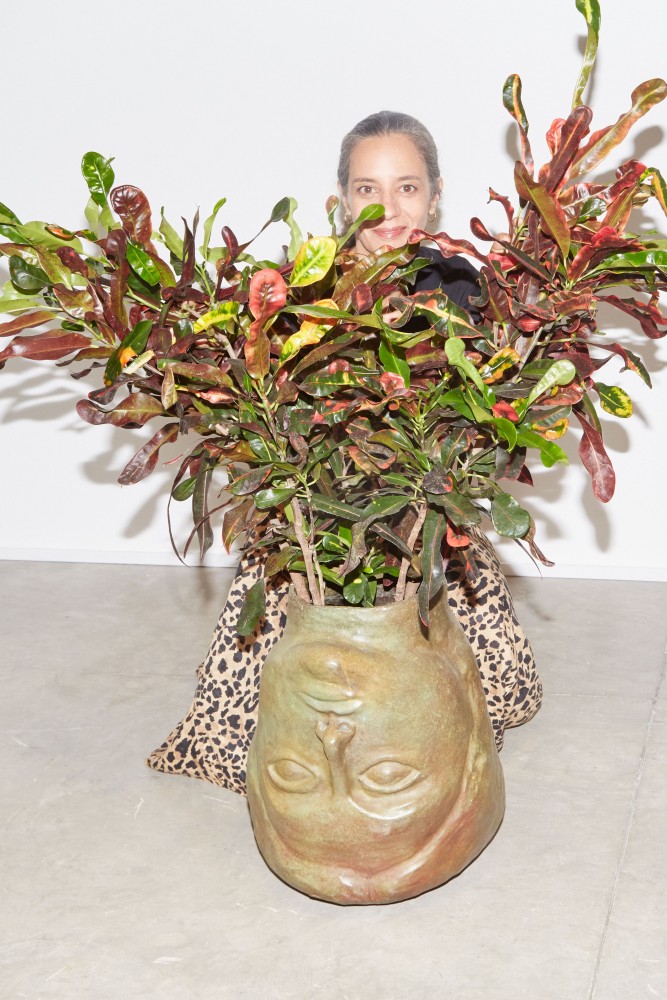
Do you remember the thought process or the moment that inspired you to take your first Japanese raku pottery class?
This was before I came to L.A. — my friend in Zurich told me about this raku workshop. I started to go there once a week and that’s where I really started to work in clay. I was just making pots and cups at the time. Then I came to Los Angeles hoping I could go further because I knew California has such a rich history in ceramics. (There was a learning curve at first) because there isn’t a lot of raku practiced in California. I started to work with high-fire stoneware here, which is a totally different firing process than raku.
How far do you think you can push this material, clay?
There are some barriers I have to figure out, but I am always trying to push forward. It’s like building bridges. You have to know the rules — the base has to be heavier than the top for instance. It is a technical practice. With the larger pieces you need to think through what you’re doing otherwise you work for nothing, but with the smaller pieces I can trick the clay a little bit. I feel like I’m going to be stuck with clay for another couple of years. There is no end to exploring something though. Sometimes I think, “now I’ve done everything I can do possibly do,” but then I take a break and I think about it and I’m like, “no that’s not true — I could change this shape or material,” or “why don’t I use this clay instead of that clay,” and so on. That’s the beauty of what I’m doing — there is no end to it.
What are your sources of inspiration?
I get inspiration everywhere — nature, architecture, etc. There are so many artists I adore and look up to, (Alberto) Giacometti and Hans Arp for instance. I love Roman sculpture. I also love textiles. I’m a big knitter and I like to crochet. I see things that interest me everywhere and I try to bring them into my work.
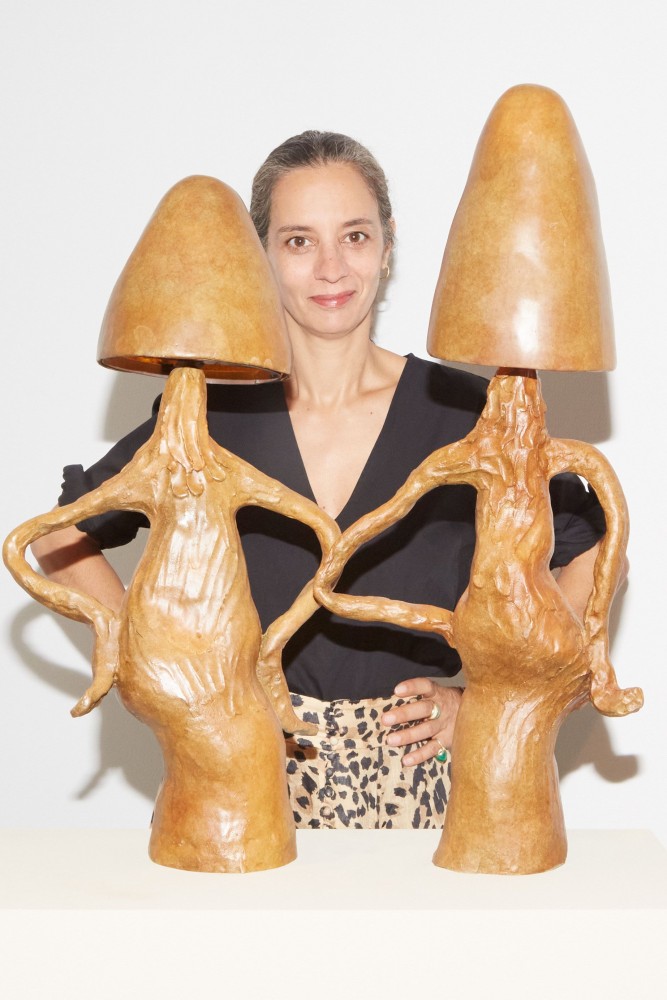
Where does a work start?
In the beginning I worked in a very free style. I did whatever I wanted to do because I didn’t really know what was going on. After a time I became very interested in building things that I had imagined. I started to make preparatory drawings. At this point I have tons of sketchbooks, so now I take a sketchbook out and see what I have. My favorite sketches I will copy in clay. A sketch from years ago might inspire me. One thing leads to something else as well — if something collapses I make it into something else. And if that comes out totally different than what I had in mind, then maybe it leads to something else. It’s funny — you think you reach a limit or get tired of something, (but there are always ideas). The cycle goes on and on.
How do you feel when you are making your pieces?
I feel super happy. I had a completely crazy year of work, which was great, but now I’m coming down a bit and trying to figure out new ways to work. I’m looking forward to this moment of being in the studio, with no pressure to make 20 pieces.
You have called your pieces your friends — what kind of impact do they have on your life or psyche?
They become part of my everyday life. They literally surround me in the studio. They make fun and they laugh or they cry.
Your earlier work seems to have been simpler in form, almost amorphous, whereas your recent pieces seem to be more human and more complex. Was that a natural progression as you mastered the material, or a conscious shift?
It was a natural progression. This is the evolution of my work. I try to come up with new forms each time I produce a body of work. I’m constantly exploring what else is possible and what’s not possible. I don’t ever want to go backwards.
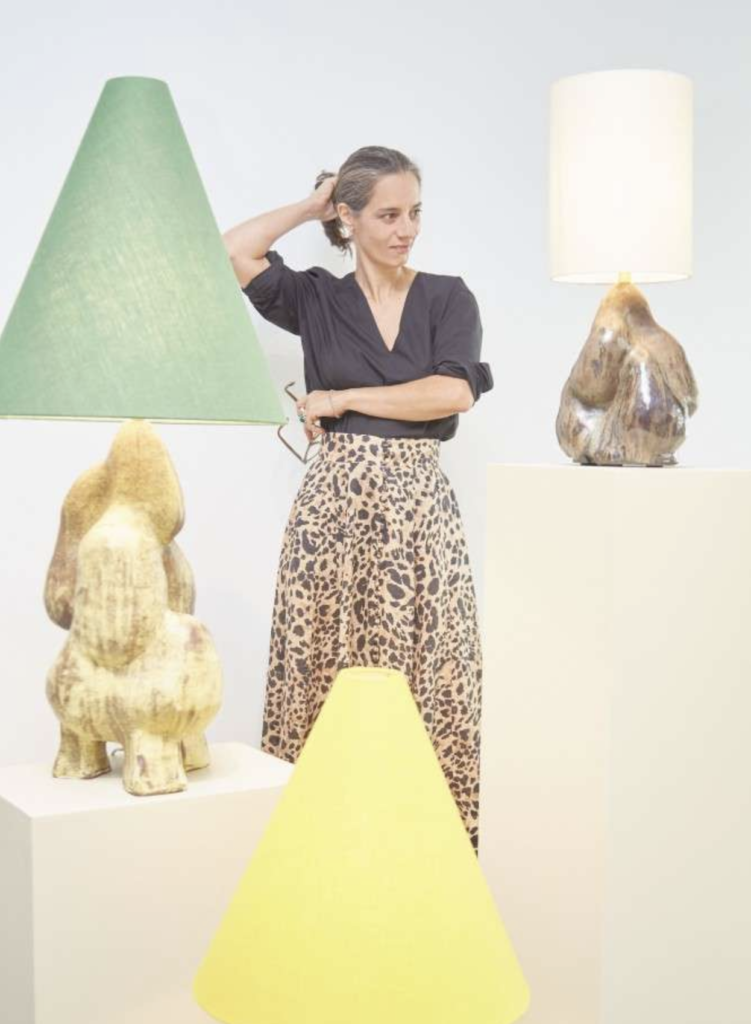
What ideas are percolating in your head for the future?
I was working on the pieces for the Friedman Benda show, and of course with each piece you do, you always think, “this is kind of good, but how can I make it better or how can I change it?” For instance, the shade is always on top of a lamp, or at its center. I want to try to change that, thinking of the piece more as sculpture — maybe this is my new way to make the base more present than the shade or the light. I also started to work in bronze, which is one of the greatest materials ever. Everything is possible in bronze. It’s all a process — let’s see what comes out of it.
Lastly, outside of their physical function, what do you want your work to do, if anything?
I just want to make work that makes people laugh. What makes me very happy is people appreciating my work, because it is a little weird and it’s very humorous!
